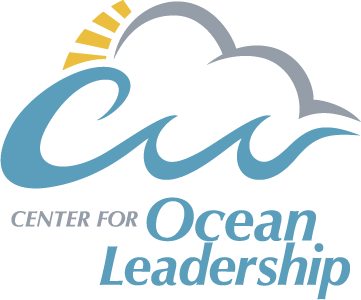Blue Energy
Resources

Blue Energy: Powering the Planet with our Ocean
Our ocean, with its continuous movement of surface winds, tides, and currents, as well as differences in salinity and temperature, offers a naturally abundant source of energy that can be harnessed to generate power. In a time when the continued use of fossil fuels is leading to adverse impacts on our environment, marine resources and human health, a shift toward reliable, renewable energy has never been more crucial. Our coastlines have great potential for generating marine renewable power, and the Northwestern Coast of the U.S. is notably one of only a few areas in the world with abundant available resources for wave and other ocean power development. While just a few Marine Renewable Energy projects exist currently, the technology is advancing rapidly, and the field is providing clean energy career opportunities for tomorrow’s ocean leaders.
Topics To Explore
Webinar Series
View the NOSB’s marine renewable energy themed Professional Development Webinar Series recordings to learn more about evaluating potential environmental effects, engaging stakeholders in renewable energy projects, and the technology research and development efforts required to develop a commercial marine hydrokinetic system.
2022 Professional Development Webinars: Dr. Sean Hayes
As climate change begins to have influences on the physical processes of the ocean there will be a variety of responses by most marine taxa. NOAA Fisheries is responsible for managing many if not most of these species in US waters. The presentation will highlight some general principles that can be expected, and then dive a little deeper into some case studies from several of NOAA’ Species in the Spotlight including seals, salmon, whales and more.
2022 Professional Development Webinars: Dr. Andrea Copping & Dorian Overhus
As we combat climate change, marine renewable energy (MRE) has the potential to play an important role. However, we need to understand the impact tidal, wave, and ocean thermal energy devices may have on marine animals and the environment in order to deploy MRE devices in a responsible manner. This webinar will cover the importance of MRE and how it relates to climate change, what is known about environmental interactions, and next steps for the industry.
More Places To Learn
Powering the Blue Economy: Exploring Opportunities for Marine Renewable Energy in Maritime Markets (Department of Energy)
Renewable Energy Sources and Climate Change Mitigation (IPCC)
Electricity from Renewable Resources: Status, Prospects, and Impediments (NASEM)
An Evaluation of the U.S. Department of Energy’s Marine and Hydrokinetic Resource Assessments (NASEM)
America’s Energy Future: Technology and Transformation (NASEM)
Ocean Renewable Energy (children’s book)
Nothing to add here. Should we remove this tab?
Marine Renewable Energy
- BOEM’s Renewable Energy programs
- Department of Energy’s Marine & Hydrokinetic Program
- Marine Renewable Energy Collaborative
- Tethys Marine Energy
- National Hydropower Association’s Marine Energy
Offshore Wind Energy
- US Department of Energy Wind
- U.S. Department of Energy Wind Energy Technologies Office – Offshore Wind Research and Development
- National Wind Technology Center
- Public Radio International U.S. Offshore Wind Farm
Ocean Wave Energy
- BOEM Ocean Wave Energy
- NREL Water Research
- Renewable Northwest Wave & Tidal Energy Technology
- US Department of Energy – Marine Energy Basics
Ocean Current Energy
Marine and Hydrokinetic Energy
- Office of Energy Efficiency & Renewable Energy – Marine and Hydrokinetic Energy Research
- Office of Energy Efficiency & Renewable Energy – Marine and Hydrokinetic Technology Development
- National Hydropower Association
- Union of Concerned Scientists – How Hydrokinetic Energy Works
Ocean Thermal Energy
- Makai Ocean Engineering
- Ocean Thermal Energy Corporation
- Ocean Thermal Energy to Power Underwater Vehicles
Osmotic Pressure


